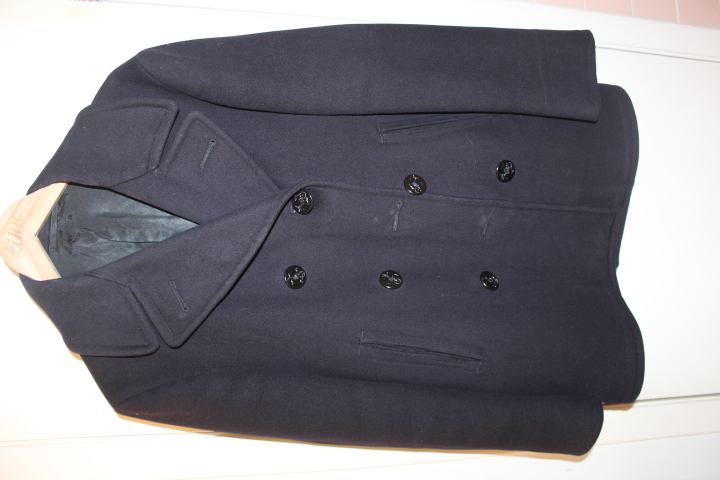return of neo
New in Town
- Messages
- 9
I recently bought a US Navy Issue peacoat from a thrift shop in NY. It came dirty and requires some tailoring work, yet is one of the coolest coats I have ever seen.
I have a slight issue though. In my religion we cannot wear wool and linen in the same garment. The special religious tester said that this coat is probably made from reclaimed/ recycled materials, and if so this would highly increase the chance of having linen inside, but it would be ridiculously expensive to test the entire coat.
What are your thoughts?
Would certain era coats have this collection of filler material? What is the likelihood of this coat having linen in it?
Although I am not a expert, due to descriptions in have read on other threads, I believe it is made from Kersey wool.
I have attached pictures in order for you guys to take a look.
One last question. What do you think is the best way to deal with the fix-up work? Should I get the original polyester lining replaced? Should I have the raw edges of the front buttonholes sewed? (Similar to the buttonhole on the lapel.)
Once again, thank you so very much for your time and your help.
Mr Rusrus
Front right cuff threading.
Front right outside pocket.
Front putside button.
Top left lapel and button hole.
Label on right side of interior.
Hanging tab on neckline area.
Small pocket on lower left interior.
Corduroy lined main pockets.
I have a slight issue though. In my religion we cannot wear wool and linen in the same garment. The special religious tester said that this coat is probably made from reclaimed/ recycled materials, and if so this would highly increase the chance of having linen inside, but it would be ridiculously expensive to test the entire coat.
What are your thoughts?
Would certain era coats have this collection of filler material? What is the likelihood of this coat having linen in it?
Although I am not a expert, due to descriptions in have read on other threads, I believe it is made from Kersey wool.
I have attached pictures in order for you guys to take a look.
One last question. What do you think is the best way to deal with the fix-up work? Should I get the original polyester lining replaced? Should I have the raw edges of the front buttonholes sewed? (Similar to the buttonhole on the lapel.)
Once again, thank you so very much for your time and your help.
Mr Rusrus
Front right cuff threading.








